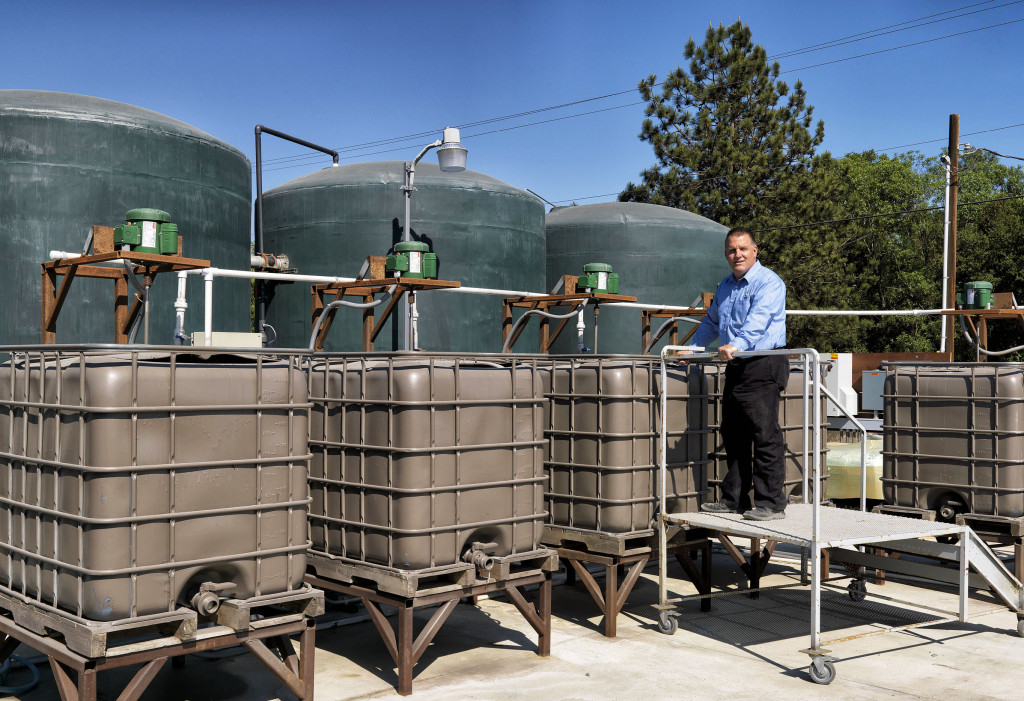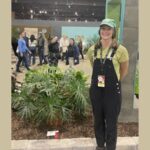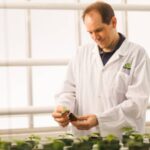
Taking a Proactive Approach to Water Conservation
Pacific Plug & Liner (PP&L) in Watsonville, Calif., recently completed the installation of a water reclamation system for its 15-acre outdoor production area. Although primarily a young plant producer with 8 acres of greenhouses, PP&L also finishes perennials for parent company Smith Gardens. The reclamation system project was initiated three years ago to collect runoff that was coming from the overhead irrigation of finished 1- and 2-gallon perennials.
"One of the major incentives to install the reclamation system was over $57,000 in grants we received from USDA-National Resources Conservation Service's Environmental Quality Incentives Program and Agricultural Water Enhancement Program," says PP&L general manager Hank Bukowski. "Another issue is the farm management system that Santa Cruz County is implementing. Officials in Santa Cruz and Monterrey Counties are particularly concerned with the type of chemicals being applied to agricultural crops and the impact those chemicals are having on farm workers. Part of this is related to water and managing it responsibly.
"One of the things we are trying to do is to regulate the number and amount of chemicals going into the water we use. The county's farm management system has various levels of supervision. By putting in water reclamation and recycling systems, growers get to self-manage themselves. That is a huge thing."
Bukowski says the writing is on the wall for California growers.
"Every grower is eventually going to have to go this direction," he states. "We received grant money to help put in this system. But there is going to come a time when growers are going to have to put in these systems and all of the money may have to come out of their pockets. The grant money was an incentive. Our project ended up costing over $217,000."
Another incentive for installing the reclamation system was being able to reduce the amount of water applied.
"We pay for our water," Bukowski explains. "In Santa Cruz County if you have a well system, a meter measures the amount of water used and you are assessed by the Pajaro Valley Water Management Agency based on your water use. Because this is an agricultural area, people are sensitive to the use and sustainability of natural resources and the nearby Monterrey Bay. People are concerned with the amount of water being pulled out of the aquifers and the quality of water running off into the ocean."
For Outdoor Use Only
Three contractors and six equipment companies were involved in the installation of the reclamation system. One of the first systems that was installed was a silt collection system. Another drainage system, that was already in place, collects runoff from the greenhouses. Once the proper filtration is installed, the greenhouse runoff will also be redirected to go into the outdoor reclamation system.
Bukowski says one of the problems encountered with the greenhouse runoff is the large amount of growing medium debris in the water.
"We are in the process of designing a screen system to filter out the growing medium components including vermiculite, perlite and any other debris," Bukowski says. "The greenhouse screen system will enable us to remove the debris so that it doesn't go into the reclamation system. Once that is done, water will be collected from the greenhouses and put into the reclamation system; it will be sterilized, balanced for pH and EC and then reused out in the fields and collected again, treated and reapplied."
Three 10,000-gallon tanks were installed for holding the reclaimed and treated water.
"The system was sized to allow for adequate collection, storage and reuse of a projected amount of irrigation runoff flow, along with an additional buffer to allow for an initial volume of rainwater runoff," Bukowski says.
Eventual Greenhouse Application
This is the first full season that PP&L is using the reclaimed water. Right now the company's growers are not seeing any issues with the outdoor field crops that are being irrigated with the water collected by the reclamation system. The plants receiving the reclaimed water are doing well.
Bukowski says the reclamation system is complicated and required interfacing different parts and systems that had to work together properly.
"There is a filtration system to remove debris from the water," Bukowski explains. "The water is aerated and treated with chlorine to kill any potential disease pathogens."
The water is collected and monitored for pH and EC using Hanna Instruments equipment.
"The water is adjusted for pH and EC before it goes back out," Bukowski adds. "If we are applying 200 ppm of a 15-5-15 fertilizer, what we are seeing is when the water comes back into the system there is about 100 ppm still in the water. We are saving a lot of money on fertilizer that is not going into the ground."
Before PP&L began using the treated reclaimed water on its actual crops, a test garden mum crop was brought in to be sure the system was working properly.
"Mums can be sensitive to pH swings, they are sensitive to chlorine and they are sensitive to iron toxicity," Bukowski says. "We ended up selling the entire crop. From the day we turned on the system we never saw any variance in the crop whatsoever. We went from using the reclaimed water on that test mum crop in the fall to our regular outdoor perennial crops."
One other issue growers need to be aware of is the preventive maintenance that has to be done on the installed equipment. Once the equipment is operating in balance it needs to be maintained to keep it working properly as a system. Ensuring that the chlorine injection, fertilizer injection, and the pH and EC monitoring were working in sync was initially a major effort. Now that has been accomplished, the system is operating smoothly.
For more information: Pacific Plug & Liner, 750 Casserly Road, Watsonville, CA 95076; 831.722.5396; hankb@ppandl.net; www.ppandl.net.
Taking a Proactive Approach to Water Conservation


 Video Library
Video Library 



















